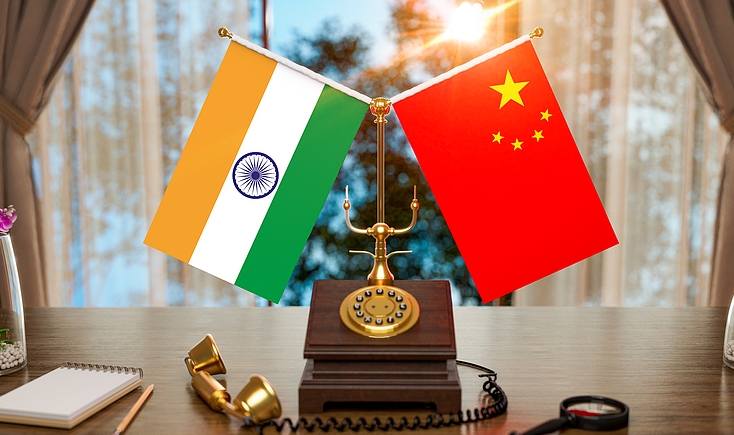
Last week, Indian Prime Minister Narendra Modi described the relationship between China and India in positive and flattering terms.
"Our ties have been extremely strong with deep cultural connections," Modi said during an interview with American podcaster Lex Friedman. "If we look back centuries, there's no real history of conflict between us. It has always been about learning from each other and understanding one another.”
This sentiment echoed the comments made by Chinese Foreign Minister Wang Yi earlier this month. China and India should be partners contributing to each other's success, and a cooperative "pas de deux" of the dragon and the elephant is the only right choice for both sides, Wang said at a press conference on the sidelines of the third session of the 14th National People's Congress in Beijing.
In recent months, the two countries have made progress in resolving border disputes in the Himalayas, one of the key issues troubling their bilateral ties.
In December 2024, the two sides reached a six-point consensus to safeguard peace and tranquility in the border areas and promote the healthy and stable development of bilateral relations.
Additionally, they agreed to continue enhancing cross-border exchanges and cooperation, including the resumption of Indian pilgrimages to Xizang's Mount Kailash and the further strengthening of the special representatives meeting mechanism.
Recent meetings between the two countries have focused on the implementation of the consensus, covering border management and control, institutional mechanisms, and cross-border exchanges and cooperation.
Despite their differences, Beijing and New Delhi have benefited significantly from bilateral cooperation since the establishment of diplomatic relations in 1950.
From 2016 to 2023, India-China bilateral trade grew by 66.38 percent, averaging a yearly growth rate of 9.48 percent, according to the Embassy of India in Beijing.
China reclaimed its position as India's top trading partner last year, surpassing the United States after a two-year gap, according to the latest report from the Global Trade Research Initiative (GTRI). Bilateral trade between the two Asian giants reached $118.4 billion in 2024, reflecting a 4-percent increase from $113.8 billion in 2023.
Both countries have leveraged their strengths in technology and production. While China remains a vital supplier of industrial goods such as electronics, machinery and chemicals, it imports pharmaceuticals, agricultural products and software services from India.
Chinese companies like Xiaomi and Huawei have also been manufacturing smartphones in India under the "Make in India" initiative, generating thousands of local jobs.
Recently, Chinese Ambassador Xu Feihong reaffirmed China's willingness to welcome more Indian investments and goods, particularly in information technology and pharmaceuticals. This signals a shift toward a more balanced trade relationship, helping to reduce India's trade deficit with China.
Beyond trade, cultural exchanges have played a vital role in strengthening ties. In January 2025, China agreed to resume Indian pilgrimages to Mount Kailash, a sacred site for Hindus, Buddhists and Jains. This move was seen as a significant diplomatic gesture, reinforcing cultural bonds between the two nations.
Additionally, Bollywood films have gained popularity in China, with movies like "Dangal" and "Secret Superstar" grossing millions at the Chinese box office. Similarly, Chinese martial arts and historical dramas have developed a strong fanbase in India, further enriching cultural exchanges.
Source:https://news.cgtn.com/news/2025-03-31/China-India-ties-thrive-with-trade-cultural-exchanges-1CbBvW4tqKs/p.html
- News
- Home>News>Industry News

- Tel:+86/10/85879300
- Fax:+86/10/85879321
- Email:info@andazgroup.com
- Address:Suite 1008, 10/F, Landmark Tower 1, No. 8 Dongsanhuan Beilu, Chaoyang District, Beijing, 100004, PRC
China-India ties thrive with trade, cultural exchanges
Views:617 Updated:2025-04-02
